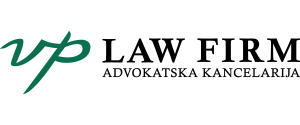Predrag Miladinović i Jelisaveta Janić • Dec 10, 2020
Bank lending continues to rise in Q3 2020
The Trends in Lendingreport for Q3 2020, released by the National Bank of Serbia (NBS), indicates lending has continued to increase in this quarter, following the trend first observed in Q2, when bank loans were chiefly driven by the Serbian Government’s guarantee scheme and public financial support for liquidity and working capital, both of which were designed to help businesses weather the Covid-19 pandemic.
Lending registered a year-on-year increase of 13.3 percent at the end of Q3. Year-on-year growth of lending to businesses also stood at 13.3 percent, a rise of 17.6 billion dinars, whereas loans to households increased by 13.8 percent, or 49.5 billion dinars. Non-performing loans accounted for 3.4 percent of total exposure.
In Q3 2020, Serbia recorded the highest lending growth in the region.
Lending to businesses
The greatest proportion of loans to businesses was again intended to finance current liquidity and working capital. A total of 1.2 bn euros was approved as part of the guarantee scheme, with 519.8 mn euros disbursed to micro-, small and medium-sized companies (MSMEs) and sole traders in Q3.
Lending grew across all industries, primarily manufacturing, construction, and agriculture. Borrowing by the farming sector was boosted by the Government Order on financial support to farms through facilitated access to loans in the challenging economic environment due to the Covid-19 disease caused by the SARS-CoV-2 virus (Official Gazette of the Republic of Serbia, No. 57/2020), which aimed at making it easier for agricultural holdings to access loans for a variety of uses at partially subsidised interest rates.
The weighted average interest rate on new euro and euro-indexed corporate loans stood at 2.7 percent, unchanged from Q2 2020, whilst the weighted average interest rate on new dinar corporate loans was somewhat higher, at 3.3 percent, in a slight drop relative to the previous quarter.
Non-performing loans (NPLs) to businesses accounted for 2.5 percent of all lending, a new historic low, primarily owing to the loan repayment moratorium that virtually prevented any loans in default from being accelerated.
Looking at future corporate lending trends, banks are certain to tighten their risk policies, which will reduce maximum loan amounts, shorten repayment periods, introduce stricter collateral requirements, undermine capital investments, and increase the proportion of borrowing used to refinance existing obligations.
Lending to households
In the household sector, cash and home loans picked up, as did consumer loans and credit card debt. Household borrowing was positively affected by the Decision on interim measures to facilitate access to finance for natural persons (Official Gazette of the Republic of Serbia, No. 108/2020), enacted by the NBS in Q3 to help households obtain sustainable loans under favourable terms. One incentive in this context, which will remain in effect until the end of 2020, allows natural persons to access short-term dinar-denominated loans of up to 90,000 dinars, repayable over up to two years, with no other requirement other than a signed declaration of employment or pension income.
The weighted average interest rate on new euro-denominated household loans stood at 3.3 percent, down from Q2, whereas the average dinar rate rose to 8.3 percent from the 8 percent recorded in June 2020.
There is reason to believe that demand for home, cash, and refinancing loans is set to increase further.
As with the corporate segment, NPLs to households also registered a very low rate of 3.6 percent, also due to the two loan repayment moratoriums introduced in 2020. Nevertheless, given this year’s incentives for dinar-denominated lending to households, NPLs are highly likely to increase in the future.


